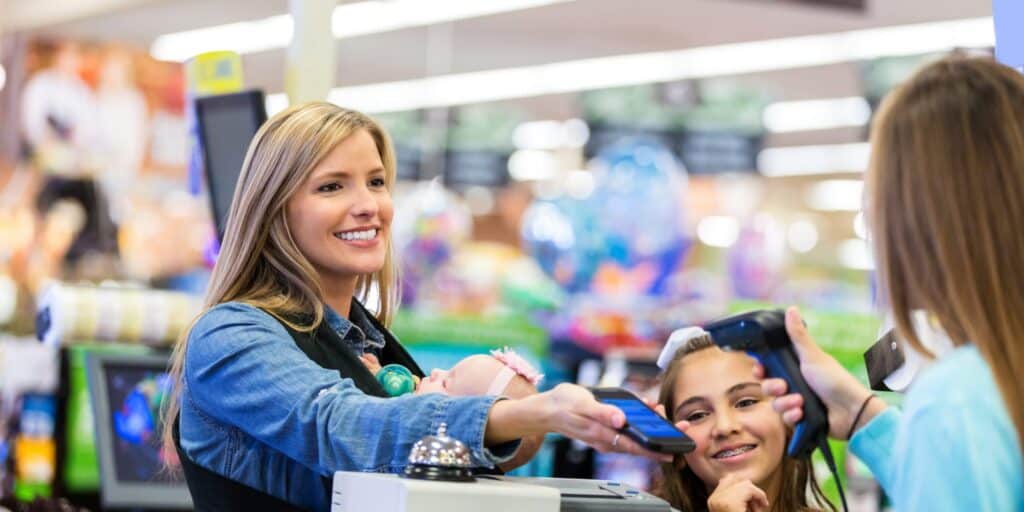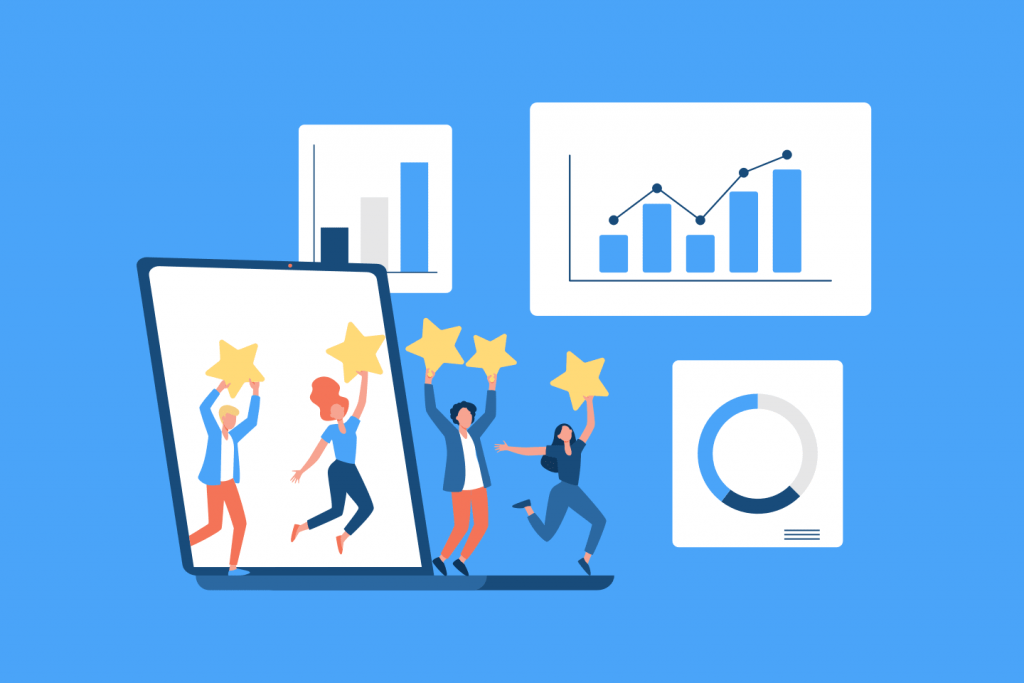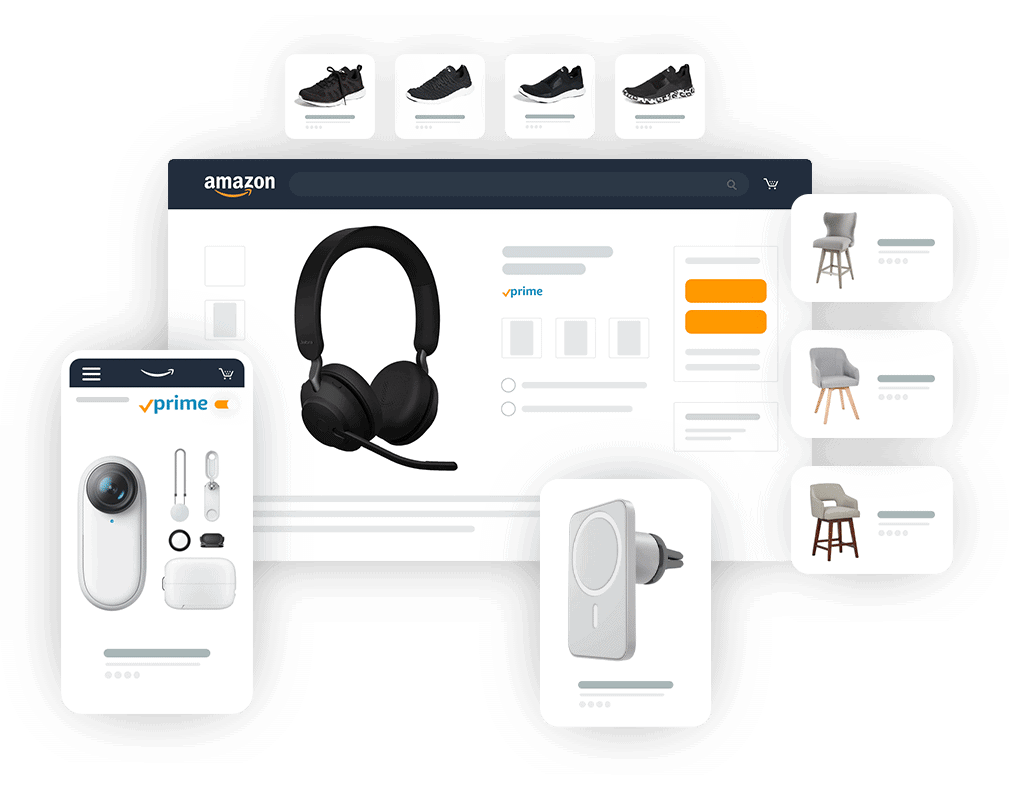Driving Devotion with Customer Loyalty Programs
Customer loyalty programs have become ubiquitous in retail, hospitality, and other industries. These programs offer incentives and rewards to customers in exchange for their continued patronage and increased spending. However, not all loyalty programs are created equal when driving true customer devotion.
Table of Contents
What Are Customer Loyalty Programs and Why Do They Matter?

Customer loyalty or rewards programs are structured marketing strategies designed to encourage repeat business from existing customers. These programs incentivise customers to continue purchasing from a brand by offering perks and benefits in exchange for their continued patronage.
The success of any business depends on generating repeat customers. Acquiring new customers costs 5-25x more than retaining existing ones. Yet, with the average company losing 10-30% of its customer base yearly, few are investing enough resources into customer retention. This is where customer loyalty programs act as a critical retention tool.
Done right, loyalty programs increase customer lifetime value, boost retention, improve cross-selling ability, generate key customer insights, and provide a recurring revenue stream. The numbers speak for themselves:
- Members of loyalty programs deliver 30% higher lifetime value than non-members.
- Customers enrolled in loyalty programs have 30-85% higher yearly spend than non-members.
- Member retention rates in loyalty programs range from 45-85%, compared to 15-20% for non-members.
- Loyalty program members refer 3x more new customers per year than non-members.
With such impressive metrics tied to loyalty program adoption, it’s no wonder that worldwide spending on these programs is projected to reach nearly $8 billion by 2027.
The Psychology Behind Customer Loyalty Programs
Loyalty programs utilise principles from behavioural economics and psychology to influence customer actions. Their structure leverages crucial concepts like the halo effect, loss aversion, variable rewards, and reciprocity to encourage specific buyer behaviours.
The halo effect causes positive impressions in one area to influence perceptions in other areas. Reward status levels in loyalty programs generate positive emotions tied to exclusivity, status, and progress. These feelings produce a “halo effect” that positively glows over the brand in the customer’s mind.
Loss aversion refers to people’s tendency to prefer avoiding losses over making equivalent gains. Loyalty programs tap into loss aversion by granting rewards that customers would “lose” if they stopped engaging with the brand. This incentivises them to keep purchasing to avoid losing accumulated perks.
Variable rewards leverage uncertainty and anticipation to reinforce behaviours. In loyalty programs, periodic surprise upgrades, bonus points, or exclusive offers act as variable rewards that excite customers and incentivise ongoing purchases.
Finally, the social norm of reciprocity makes people feel obligated to respond to gifts in kind. Loyalty programs initiate reciprocity through their very structure of exchanging benefits for continued loyalty. This reciprocal arrangement fosters brand attachment and emotional connection.
Understanding the True Value of Loyal Customers

Many business owners drastically underestimate the lifetime value of a loyal customer. They're focused on chasing new sales instead of nurturing lasting relationships. But the numbers tell a straightforward story:
- Acquiring a new customer costs 5-25x more than keeping an existing one.
- Repeat customers spend 67% more than new ones.
- Loyal customers refer others, acting as brand ambassadors.
Loyal customers drive massive revenue when you factor in the cumulative value over years or decades. Let's take a closer look at why they are so valuable.
Increased Revenue Per Customer
As mentioned above, repeat purchasers spend significantly more than one-time buyers. Once they trust your brand, loyal customers buy more frequently, add higher-margin items to their cart, and often upgrade to premium products or services.
- Customers are 50% more likely to purchase again after their first order
- Average order value increases by 25-85% for repeat vs. new customers
This consistent revenue adds up quickly. You'll get more dollars from each person without the endless churn of replacing customers who left for competitors.
Lower Service Costs
Serving loyal customers also costs much less than constantly onboarding new ones. From marketing expenses to customer service, long-time clients are cheaper at every stage.
When someone already trusts you, they require less education about your offering. Handling product questions and issues is faster with an existing knowledge base. These service efficiencies mean higher profits and happier customers on both sides.
Word-of-Mouth Referrals
Satisfied recurring purchasers act as vocal advocates for your brand. When they rave about you to friends or write online reviews, that powerful word-of-mouth marketing saves you a fortune on lead generation costs.
Positive referrals convert at higher rates thanks to built-in trust before prospects contact you. This multiplier effect continues delivering value long after the initial sale.
Increased Customer Lifetime Value
Combine higher spending, lower service costs, and unpaid referrals over months or years, and you end up with drastically increased lifetime value per loyal customer compared to one-time buyers.
This table illustrates the difference:
| Customer Type | One-Time Buyer | Loyal Repeat Customer |
| Average Order Value | $100 | $150 |
| Annual Purchases | 1 | 4 |
| Customer Lifetime | 1 Year | 5 Years |
| Total Lifetime Value | $100 | $3,000 |
As you can see, loyal repeat customers deliver exponentially higher value…if you can keep them returning.
What Makes a Strong Customer Loyalty Program?
The most effective customer loyalty programs have certain key features that spur ongoing engagement:
Immediate Gratification
Customers want to start reaping rewards as soon as possible when they sign up. Programs that make members wait too long for an initial reward often result in quick abandonment. Offer an immediate signup perk.
Achievable Tiers
Multi-tiered programs providing elevated benefits at each level give customers short and long-term goals to strive towards. Make lower tiers quickly attainable to hook members in.
Premium Perks
Loyalty perks should feel special and get better at higher tiers. Discount codes, free products/trials, priority service, members-only experiences, and first access to new items entice customers to participate actively.
Easy Enrollment
Reducing friction during enrollment ensures quick signup and avoids drop-off. Allow enrollment during checkout or via website/app with minimal fields to complete.
Omnichannel Applicability
Members expect to use rewards however they engage – in-store, desktop, mobile, etc. Uniformity across channels also gives a seamless brand experience.
Driving Initial Excitement for New Programs
Launching an exciting new loyalty initiative is the first step toward building an engaged community of brand devotees. Some ways to drive early enthusiasm include:
Strong Early Promotion
- Advertise the launch via website pop-ups, in-store signs & associate talking points, targeted emails, social media, and more.
- Consider a press release to build additional buzz.
Enrollment Incentives
- Offer extra signup bonuses for first X days/weeks
- Give existing customer & new member referral bonuses
Accelerated First Rewards
- Increase earn rates temporarily so initial rewards come faster
- Offer the first reward for minimal activity (i.e. first purchase vs points target)
Exclusive Early Access
- Give members first availability on hot new products/services
- Create a members-only launch event around exciting offerings
Structuring a Multi-Tiered Program
While a single-tier system has advantages, a multi-tiered structure often drives greater loyalty by giving customers short and long-term earning targets.
Typical Tiers
Most programs incorporate 3-5 tiers with names like:
- Bronze
- Silver
- Gold
- Platinum
- Diamond
The more premium names reinforce the exclusivity of higher status.
Qualification Metrics
Requirements to reach successive tiers often rely on the following:
- Number of qualifying purchases
- Total spending over a period
- Earned point thresholds
Brands assign targets appropriate to regular purchasing frequency within their industry.
Benefit Progression
Each tier should include incrementally better rewards, for example:
| Tier | Benefits |
| Bronze | 5% discounts, Free samples |
| Silver | 10% discounts, Free expedited shipping |
| Gold | 15% discounts, Priority services, Exclusive offers |
| Platinum | 20% discounts, Free products, VIP treatment |
Higher tiers feature premium perks and privileged access.
Driving Ongoing Engagement

While robust onboarding is crucial, brands must motivate customers to stay active within loyalty programs long-term. Tactics to maintain engagement include:
Reward Expiration
- Points/status that expires if there is no activity over a set timeframe
- Encourages periodic brand interaction
Temporary Bonuses
- Bonus point categories that rotate quarterly
- Encourages trying new products/increasing spend
Member-Only Events
- Special experiences like pop-up dinners, early access shopping, parties
- Makes members feel special with unique treatment
Tier Downgrades
- Lowering tier if metrics are not upheld
- The risk of losing status prompts maintenance activity
Surprise & Delight
- Unexpected perks (bonus points, gifts, upgrades)
- Delighting members boosts positive brand perception
Proactively incorporating incentives and experiences to remain top-of-mind keeps loyal customers continually engaged.
Gamifying Elements to Increase Fun
While points, tiers, and rewards form the foundation, gamifying loyalty programs amplify enjoyment and participation. Gamification tactics include:
Progress Tracking
- Visibility into points earned, spend till next level, and progress to unlock tiers/rewards
- Quantifiable metrics and advancement visualisation feel rewarding
Challenges & Quests
- Personalised or program-wide goals to complete for perks
- Time-bound tasks like high spend for bonus points
- Provides purpose and direction
Social Sharing
- Connect the program to social platforms
- Allow sharing status, achievements, photos
- Leverages social accountability and virality
Leaderboards
- Showcase top members by tier attained, recent activity, lifetime points, and more.
- Positive peer competition to rise the ranks
While a strong program structure keeps customers engaged, fun gamification elements help drive even higher activity and satisfaction.
Using Data Analytics to Refine Programs
The customer data captured within loyalty programs presents a tremendous opportunity to analyse activities and refine tactics based on insights uncovered. Key statistics to examine include:
Enrollment vs Active Rates
- Enrollment: percentage of customers joining a program
- Active: percentage redeeming rewards/tracking progress
- Wide gap signals onboarding issues or poor ongoing incentivisation
Tier Distribution
- Percentage of members at each status level
- Outlier tiers prompt assessment of qualification criteria
Earn/Burn Rates
- Earn: Average points earned per member monthly/annually
- Burn: Average points redeemed per member monthly/annually
- Imbalance informs whether accelerating/decelerating point circulation could benefit engagement
Churn Rate
- Percentage dropping out monthly/annually
- Rising churn warrants the identification of dissatisfaction triggers
Perk Preference
- Most redeemed rewards
- Helps tailor offerings toward highly valued options
Frequently monitoring program performance through data analytics allows tailored enhancements that fill engagement gaps and boost customer devotion over time.
Top Customer Loyalty Program Examples From Leading Brands

1. Starbucks Rewards
With over 25 million members accounting for 50% of sales, Starbucks Rewards is often cited as the gold standard for retail loyalty programs. Key strengths:
- Multiple aspirational status tiers tied to progressive benefits
- Generous rewards fueling extremely active engagement
- Order-ahead functionality integrated with loyalty ID for instant personalised service
2. Sephora Beauty Insider
Sephora’s wildly popular 3-tiered program has boosted Revenue Per Member to over 75% higher than non-members. Distinctive features:
- High perceived status tied to elite tiers
- In-store digital integration powers personalised shopping
- Combination of discounts and access to unique VIP, new product and trial opportunities
3. Amazon Prime
Amazon Prime’s playbook has turned an expedited delivery and media service into a lifestyle necessity for over 200 million members globally. Success drivers:
- Halo effect and variable rewards from subscription “reveals”
- Free premium delivery as an anchor benefit
- Constant expansion into complementary verticals to increase engagement
4. Nike Run Club App
This digital fitness community of over 50 million links program rewards directly to physical activity and social sharing. Notably:
- Gamification through tracking activity, earning badges, competing on leaderboards
- Rewards redeemable against Nike products increase purchase frequency
- A mix of training content and community features enhances engagement
5. GameStop PowerUp Rewards Pro
Despite retail struggles, GameStop retains exceptional loyalty through a tiered program focused on gamer identity. Unique elements:
- Currency earning from both purchases and game trades
- Rewards doubled on pre-owned items with higher margins.
- Elite-status VIP access to events, early game/console releases
While distinct in their branding and industry-specific perks, these leading programs all structure core incentives around driving behaviours with the highest customer lifetime value. Their tiered benefits ladder, status-based exclusivity, and a blend of emotional and monetary rewards serve as a model for modern loyalty programs.
Conclusion
Well-structured customer loyalty programs that provide tiered rewards, premium perks, fun gamification elements, and data-driven improvements can dramatically increase lifetime customer value. However, brands must first incentivise signups with compelling onboarding promotions and benefits.
Once enrolled and maintaining engagement via progress tracking, member-only experiences, bonus opportunities, and more leads, participating customers develop abiding preferences for brands that make them feel special. While implementing a successful program presents some upfront investment, the long-term profits derived from raving fans that iterate between the tiers of your ecosystem can be well worth the effort.
5 Frequently Asked Questions About Customer Loyalty Programs
1. How much do customer loyalty programs cost?
Costs vary based on program size, benefits complexity, reward types offered, etc. Simple programs for small businesses may only require part-time staff and minimum software. Enterprise programs can involve entire teams and advanced platforms. As a budget guideline, expect technology and operational costs to be around 2-5% of the program's related revenue.
2. How long do customer loyalty programs take to implement?
Most standard loyalty program platforms allow launch within 3-6 months. The timeline depends on the integrations required, design complexity, legal considerations, etc. Beginning with a pilot MVP program for faster data learning is recommended over attempting a broad, perfect launch.
3. What kind of rewards should you offer?
Aim for a blend of transactional discounts, status-based upgrades, and aspirational experiential rewards. Ideally, combine instant gratification offers with longer-term VIP access goals. Consider margin tradeoffs and optimise based on data.
4. How do you calculate the ROI of a customer loyalty program?
ROI should analyse customer value metrics like reduced churn, the higher share of wallet, new referrals, etc., against operational and reward costs. Assign revenue value to behaviours driven by the program over a multi-year customer lifecycle.
5. Should companies offer more than one loyalty program?
Generally, a single consolidated program covering a brand’s divisions strengthens engagement the most. However, large conglomerates may benefit from multiple programs if customers perceive limited crossover between divisions. Analytics can assess any cannibalisation risk.
